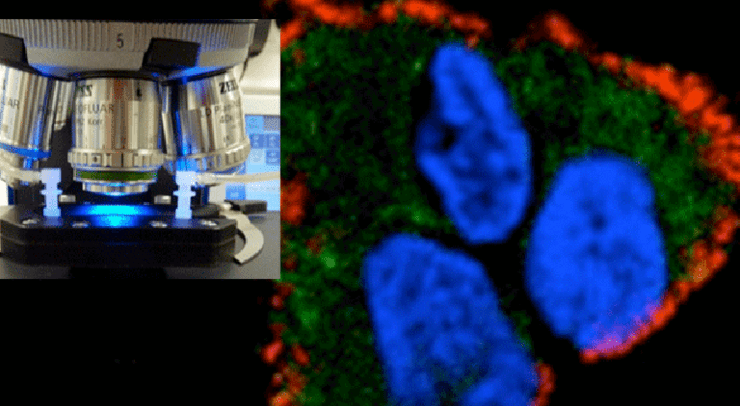Detecting nanoparticle toxicity

Although only a few nano-drugs are on the market today, numbers here should rise rapidly in coming years. But possible side-effects of the nano-particles on the living cell structures are as yet not well known. The Nanotoxiscreen project will help improve the situation and our understanding.
UTC’s Enzyme and Cell Engineering Lab. (UTC-GEC) has been studying for several years now, how to synthesize nanomaterials, to test their physico-chemical properties and interactions with living cells and tissues.
It is in this framework of research that the Lab has developed a certain number of techniques pour synthesis and characterization of nanoparticles.
However no method was available to systematically and rapidly detect possible toxicity on human cells and for this very reason, Nanotoxiscreen was conceived.
First objective : nano-drugs for the skin
In the framework of this project UTC-GEC has initiated a collaboration with the University of Applied Sciences of Thüringen (Germany), developing microsystems to make and observe cell cultures under a fluorescent microscope. Nanotoxiscreen is co-financed by the Picardie Region, and accompanies the EC Programme NanoDrugs – preparation of function-oriented nano-materials designed to develop new skin drugs.
“We are working more specifically on drugs that will help cure skin diseases, especially the category of inflammatory skin disorders”, says Kartsten Haupt, research scientist working at UTC-GEC. “The nano-particles in the drug lotions will stay on the skin but will not penetrate below the skin given their dimension. In effect, the scale of nano-particles we are studying are between 30 and 70 nm. They are generally composed of a compound polymer and an active agent. But we can also add magnetic or fluorescent nano-particles, according to needs”.
Direct observation
The cells studied are genetically modified keranocyste (skin cells); they have a gene that triggers production of a florescent protein if the cell is stressed.
“Using the micro-systems developed at the University of Applied Sciences Thüringen, we can observe directly the impact of the nano-particles injected in the skin cells cultivated in the system”, explains Karsten Haupt. It is a closed system that presents a certain advantage compared with standard approaches. “A close system is easier to handle under a microscope, given that we no longer need to place the cultured cells in a special atmosphere. We could easily extend the system to other microscopes”. The data obtained after observation under microscope can then be used to modelise the release of the active agent on the patient’s skin. This observatory platform could also be used in biomedical domain in general, or in cosmetology and also to study other types of cell.




